My Favourite Linoprinting Tools
I love many different printmaking processes and media, but my favourite has to be working with, carving and printing lino. Lino printing is a form of Relief printmaking. Relief a printmaking process that doesn’t need a printmaking press; and working with lino is versatile and easy. Over the past 7 years I have created my list of favourite linoprinting tools and thought I’d share them with you.
I don’t believe there is any specific right or wrong when it comes to linoprinting tools. Personal preference, budget and experimentation play a big part in selecting printmaking tools. When it comes to articles with tips and hints, you’ll find them useful but nothing will beat using your own hands and practicing. Don’t be afraid to make mistakes. I have made many! And as they say, sometimes the best way to learn is to make mistakes.
I wrote this post in July 2017, and peridocialy update it. The most recent update is September 2021.
My favourite ‘lino’ to use
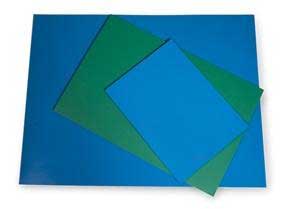 There are a few options available here. I tend to use vinyl relief plates aka Japanese vinyl. It is double-sided (blue/green or grey/green), with a black centre. The contrast of the surface colour with the black makes it easy to see where you have carved. By drawing my image on to the lino with with a thin permanent black marker also provides good contrast against the green or blue surface.
There are a few options available here. I tend to use vinyl relief plates aka Japanese vinyl. It is double-sided (blue/green or grey/green), with a black centre. The contrast of the surface colour with the black makes it easy to see where you have carved. By drawing my image on to the lino with with a thin permanent black marker also provides good contrast against the green or blue surface.
Generally this lino is easy to carve, but I have found some batches quite hard. Heating a wheat bag or hot water bottle and resting it on the area of lino you want to carve for a few minutes will soften the lino enough to make it buttery smooth to carve.
This lino plate option will also keep its shape without having to be mounted onto a block; and if it warps, heat from a wheat bag (or the sun) will flatten the plate out.
Other options are grey lino and silk cut lino. Silk cut lino is closer in composition to the original lino plates made from old flooring lino. I personally don’t like the hessian backing on these lino plates as it tends to curl after washing. If you are new to lino consider giving both options a go. I don’t believe with make a difference to the final image – so trying both will let you determine which feels right for you to use.
TIP – when you are ready to print, wipe your lino plate with some white spirits (ie metho or shellite). This will ensure that any permanent marker lines not absorbed into the plate don’t transfer to your print.
My favourite carving tools
One of my life mottos is to buy the best quality I can afford at the time – and this certainly extends to linoprinting tools. At school I started with the old wooden-handled-fixed-blade tools. They did the job. When I get back to the craft years ago I bought the Flexcut Portable Carving Set. A great set of 10 interchangeable blades and a handle, and a nifty tool roll to keep them in. A smaller 4-blade set is also available.
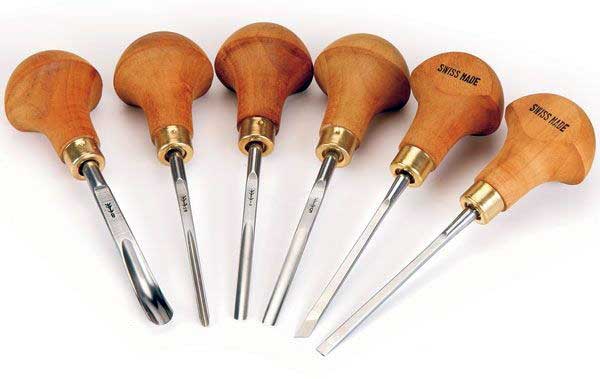 Last year I put the proceeds from the sale of work at an exhibition to new tools. Pfeil Lino Chisels. They are a delight to hold, and beautiful to carve with. Pfeil carving tools are high quality, crafted in Switzerland. They can be purchased as individual tools, in sets of 6, 8 or 12 tools. I started with a set of 6, and after more art sales earlier this year I bought a 2nd set. I’m pretty happy with the collection I have now. I can’t speak highly enough of these tools – simply delightful to use. If they are a bit out of your budget now, save up! Or just buy one tool – one that you will use most, and build your collection are your printmaking practice grows. I started with the Pfeil 6 Piece Lino Palm Sets – 6C set.
Last year I put the proceeds from the sale of work at an exhibition to new tools. Pfeil Lino Chisels. They are a delight to hold, and beautiful to carve with. Pfeil carving tools are high quality, crafted in Switzerland. They can be purchased as individual tools, in sets of 6, 8 or 12 tools. I started with a set of 6, and after more art sales earlier this year I bought a 2nd set. I’m pretty happy with the collection I have now. I can’t speak highly enough of these tools – simply delightful to use. If they are a bit out of your budget now, save up! Or just buy one tool – one that you will use most, and build your collection are your printmaking practice grows. I started with the Pfeil 6 Piece Lino Palm Sets – 6C set.
TIP – if you do decide to invest in some Pfeil tools, buy tool shapes you think you will use most, and use your older tools for the not-so-often-used tools. I started this way – and now only use my Pfeil tools.
My favourite inks
When I started with lino printing I used water based inks. They were cost effective and easy to clean up. While I’ve not seen evidence of my own prints fading, I have seen fading in other peoples prints. Although I was concerned about clean up with oil inks, I made the switch, and haven’t looked back!
UPDATED JULY 2021 ….. when I first wrote this article (July 2017) I wrote about using Gamblin oil relief inks. I loved them – their colour pigments are rich, and they’re not too glossy when dry. But they took a long time to dry. One one print the final Portland Black layer was still NOT DRY after 6 weeks.
I have officially switched to SAKURA oil inks – and love them. Fast drying and pigment rich. I will sometimes use the Gamblin Titanium White as it is more opaque than the Sakura white. I manage to print a mix of flat and glossy colour. I sometimes as Gamblin Burnt Plate oil to my inks to decrease their viscosity – I find that when I do that the inks dry with a slightly glossy sheen to them.
Inks and colour
I like to mix my own colours. Starting with primary colours, in warm and cool where available, I mix until I get the exact colour I’m looking for. Mixing my own colours pushes me to improve my colour skills. Some printmaking friends will mix oil paint into oil inks for broader colour ranges. I’m not sure about mixing different brands of ink, but if you have them, give it a go. I have mixed a metallic offset oil ink with water based etching ink (for an etching print) and it printed beautifully.
The only Sakura inks I use are:
- Prussian Blue
- Red – a warm red
- Yellow – a warm yellow
- Black
- White
Inks and cleanup
Easy! Good old fashioned cheap vegetable oil will do the job. I will admit it took me a while to get the knack of how to clean up, but I’m not looking back. Veggie oil, rags, some newspaper and its all done. After I have removed as much ink as I can from the plate and brayer (roller), I then wipe with a lightly-soaped rag then pat dry with a towel.
Citro Clean is a great alternative! It’s not toxic. It’s not oily. And it smells like oranges. I think there are a few different types of citrus based cleaners, and so far I have only tried ‘Citro Clean‘. And I like it!
My favourite baren
 A baren will help you print your lino prints by hand. It is a disk-like hand tool with a flat bottom and a knotted handle traditionally used in Japanese woodblock printing. It is used to burnish the back of a sheet of paper, lifting ink from the block. There are many options available – from the back side of a wooden spoon to a bamboo covered Japanese disc to (my favourite) glass Print Frog. Anything will work, as long as it has a smooth, flat base and you can easily hold while you burnish (or rub) the paper on top of your inked lino plate.
A baren will help you print your lino prints by hand. It is a disk-like hand tool with a flat bottom and a knotted handle traditionally used in Japanese woodblock printing. It is used to burnish the back of a sheet of paper, lifting ink from the block. There are many options available – from the back side of a wooden spoon to a bamboo covered Japanese disc to (my favourite) glass Print Frog. Anything will work, as long as it has a smooth, flat base and you can easily hold while you burnish (or rub) the paper on top of your inked lino plate.
This Print Frog has to be one of my most favourite linoprinting tools.
Why a Print Frog? Its heavy, glass, easy to hold, and weighty enough to do some of the work for you. They’re made in Texas, and come in several shapes. I use the “Pro” Print Frog – and love it! It has a broad flat base and the bulb-ish handle suits my computer-worn wrist. Its also very handy to use the side, and even the bulb-ish handle, for smaller and detailed areas of your print.
My favourite brayer
A brayer is the roller you will use to apply ink to your lino plate. Brayers are made with hard or soft rubber. I started with the Speedball rollers – using the hard rollers. I used these for many years. Until I bought my own soft rubber roller I had no idea how much easier it could be to ink my plates. I use oil inks when printing, then vegetable oil and soap and water for clean up. The oil works to keep the rubber soft. My brayer of choice is the Japanese Soft Roller from Melbourne Etching Supplies. It takes little pressure to transfer the ink to the plate, and by letting the roller do the work, the ink doesn’t fill the fine carved lines. I have a range of sizes, with the 4″ probably my favourite.
These rollers aren’t cheap – but well worth the investment. But they do need care to ensure you get as long a life from them as you can.
We use the Essdee blue handle soft brayers in my linocut workshops. For me they’re the Goldilocks of brayers – not too soft and not too hard. And they’re very well priced. I have a rnage of sizes on hand so we can use the best sized brayer for the printing job at hand.
UPDATED SEPTEMBER 2021 … I have been on the hunt for narrow brayers for a long time. And narrow brayers that felt sturdy when using them – not wobbly. I saw the Takach Press Specialty Brayers a few years ago – i finally bought myself a set a month or so ago – and I LOVE THEM! They are study, super-comfy to handle, and roll beautifully. I’m loving being able to roll ink onto small areas of my linoblocks with these beautiful tools!
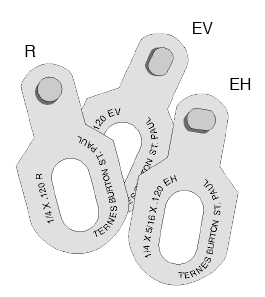 My Favourite Registration System
My Favourite Registration System
Now this is a blog post all on its own. I created my own registration system, and used it for a year or 2, that gave me near perfect registration. I’ll talk about that in an upcoming article.
However, earlier this year I discovered Ternes-Burton registration pins and tabs.
The Ternes Burton register pins are made with precision machined buttons that are spot welded to a stainless steel base. The pins work with tabs to align your printmaking papers accurately over the lino block to help you achieve tight registration on multi-coloured linoprints. I now use them for my reduction linoprints.
I will go into more detail about these pins in an upcoming blog post about linoprinting and registration.
My favourite printmaking paper
That’s a post in its own right. I have been promising to write this for a while now. I will get there, but for the moment I’ve noted below some comments on paper…
My current favourite printmaking paper for printing linocut is Arches 88. It is a delicious, soft, smooth 300gsm printmaking paper. I mostly hand-print my linocut prints; meaning I rarely use a press. Hand-printing with a baren on 300gsm paper can make for hard work, but I love this paper. Using my glass Print Frog baren makes printing this paper much easier than the traditional flat barens.
I was previously using Stonehenge 245gsm printmaking papers. I found it was a well priced paper and used it for a number of years. I switched to Arches 88 a few years ago when the Stonehenge pricing doubled. Arches 88 is more expensive than Stonehenge (even with its higher pricing), but I feel that it is a fa superior paper.
I have a range of printmaking papers for different printmaking applications in the studio. I will write an article talking through the different papers soon!
So there you have it, my linoprinting tools list. Do you have favourites to share? Printmakers are a caring and sharing bunch … please share below your favourite linoprinting tools … inks, brayers, barens and plates.


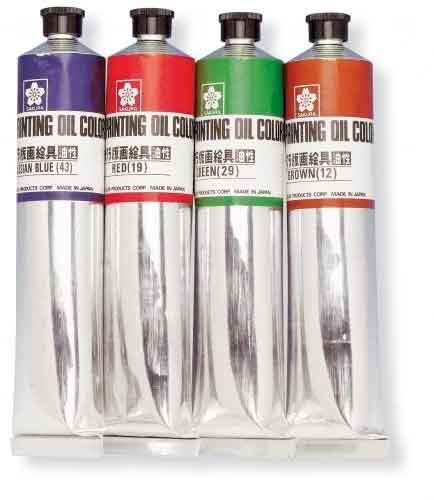
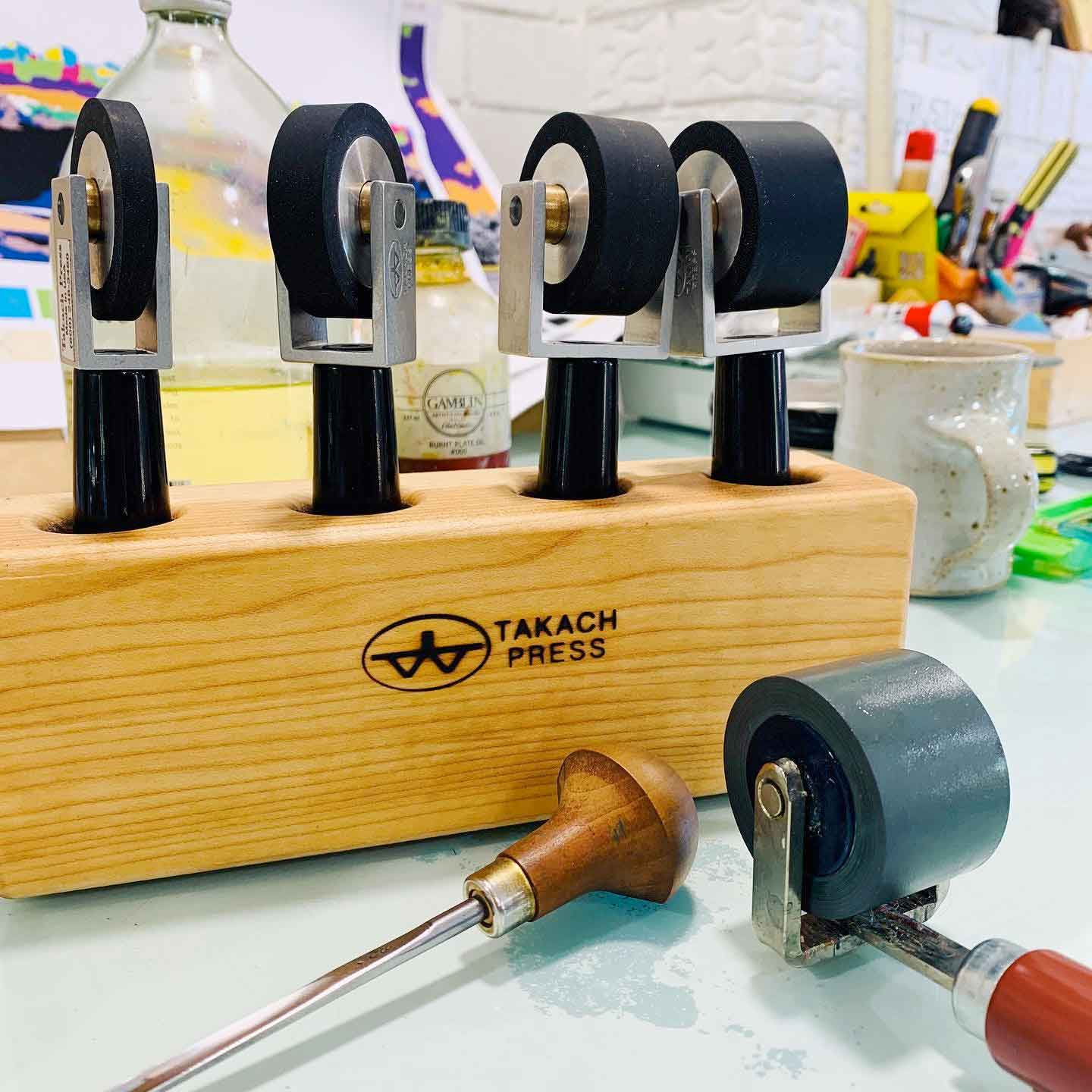
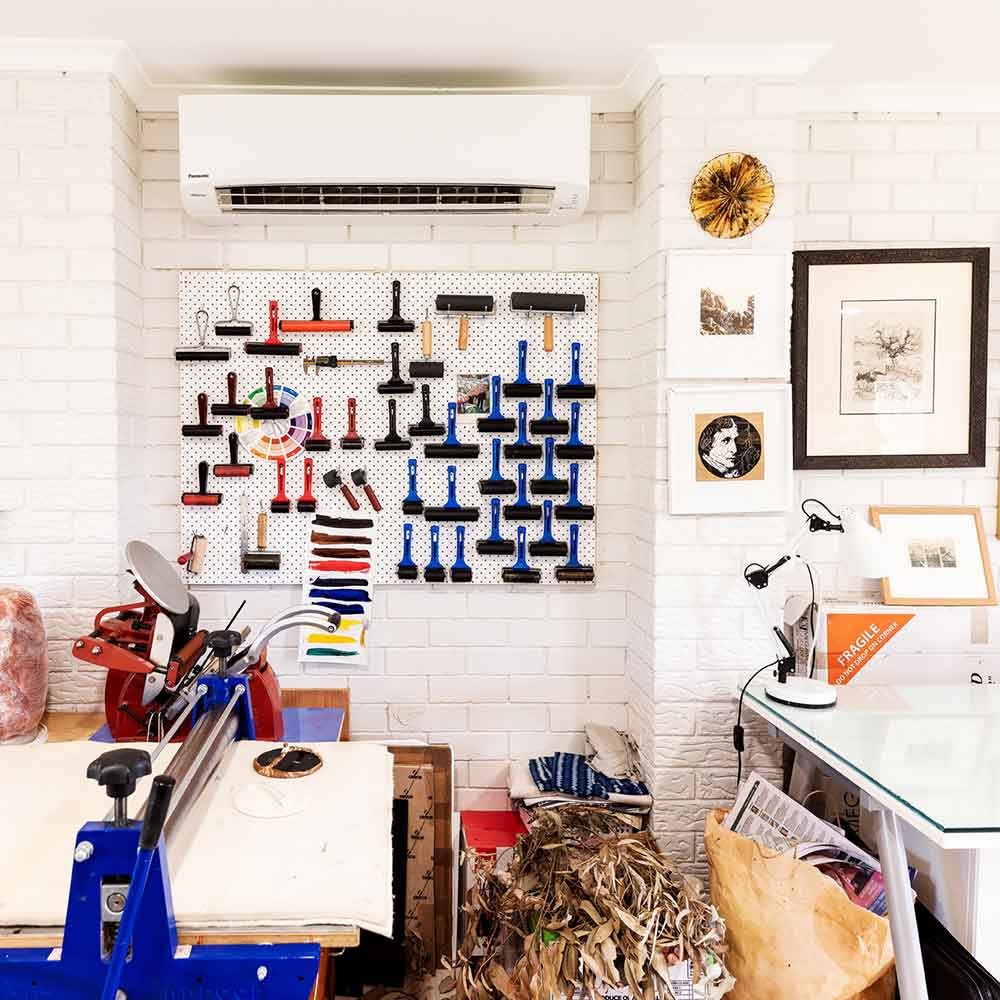
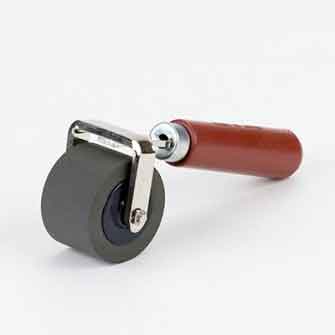


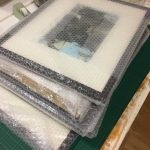

Hi Kim,
Love your prints and the very informative website – thank you for being so generous with your time. I have ordered some individual Pfeil tools and I am excited to upgrade the set I have had since school. I was wondering what tool you would recommend to cut out an accurate shape out of lino, rather than carve out a large area. I have tried standard scissors, but it’s difficult to cut around a detailed shape with accuracy eg; in the case of a leaf. Thank you.
Hi Leanne, I use a pair of small embroidery scissors to cut away areas of the block. The scissors are razor sharp and small enough to get around tricky corners. You could use a sharp knife like a scalpel or retractable blade. I cut as close as i can to the carved areas, without risking cutting into them. I hope that helps. cheers, Kim
Thanks for your article on what you use for linocuts. I was searching for some tools to buy and found this treasure trove of additional information.
I have been designing a mural in the style of linocut but now I am going to create the mural as a linocut first (not at the same size.
Im sure I am going to be back to visit your website for more insights and tips.
Hi Happy Decay, chuffed you found this helpful 🙂 A ‘linocut’ mural sounds like a fabulous plan!!
Hi Kim!
Firstly, what a FANTASTIC website you have – in EVERY respect! I wish I lived closer to come and do a workshop… but maybe one day… Thank you for this article on Lino printing tips – it came at the perfect time. Can you tell me if the registration pins are available locally? I’m having such a hard time trying to find where to buy them in Australia!
Thank you for this wonderful site – I absolutely love your work.
Cheers,
Helen
Hi Helen, THANK YOU so much for a) visiting my website and reading my post, and b) your comment 🙂 Re the Ternes Burton registration pins – I bought mine from the USA. I’m not aware of anyone selling them in Australia – but have been thinking of reselling them. I will contact TB about that! From memory this is the set I bought – https://www.ternesburton.com/stripping-tabs-collection/package-five. I love them! I still use a simple cardboard/sticky tape registration jig for small prints, and the TB pins for larger prints. cheers, Kim
I realise that this post about Pfeil Lino Palm Sets is a few years old but googling best lino tools brought me here. I ordered the set you recommended and I am so happy with them I just wanted to thank you. I also wanted to ask how you keep your tools sharp?
Hi Carol, YAY!! So happy this was helpful. I loooooove my Pfeil tools. I use a leather strop with some honing compound rubbed into it. There are some YouTube videos that demonstrate how to sharpen carving tools. Ive done a workshop – and my biggest take out – get them sharp and keep them sharp, and its easy to keep them that way. I hope that helps??
Hello Kim,
Thank you for your very informative website! I have just purchased some Japanese vinyl and I am finding it very difficult to work with. I am not a professional and have not used this type of vinyl before. I am using basic speedball cutting tools (handle with interchangeable blades) and wondered if this vinyl is better suited to the superior carving tools mentioned on your website? I will try the hot water bottle as mentioned.
Hi Nicole, if you can warm the vinyl I think you will notice a big difference. You can leave it in the sun to soften it too. I also use a wheat bag (that I use for my sore neck muscles) to warm patches of the vinyl. I have also found that some vinyl is software than others. I’m not sure if that is because of different brands or different batches. I’ve not researched it enough … my word-around is to warm the vinyl when it is too tough. I hope the hot water bottle helps you!!
Love your website Kim. Well put together and great info.
Steph McL